
Now that we have a great author website, blog, and plenty of creative content we can rub our hands together and look forward to… what?
Well obviously the long-term goal is building readership and book sales. But keeping track of how what we’re producing and sharing is viewed and consumed will continue to grow our marketing wisdom. Author website analytics help us know if we’re on the right track, and how making subtle adjustments to our content and the way we present it can adjust that track.
So this week, seven of our favorite measuring and monitoring tools to provide you with all the intel to make you an expert at analyzing the moves you’re making on your author website!
1. Google Analytics:
Everything you’d ever want to know about who’s visiting your website, from how many, how often and how long, to where they come from, and how they got there! For more info on how to install, configure and understand your Google Analytics, read this great article: The Absolute Beginner’s Guide to Google Analytics.
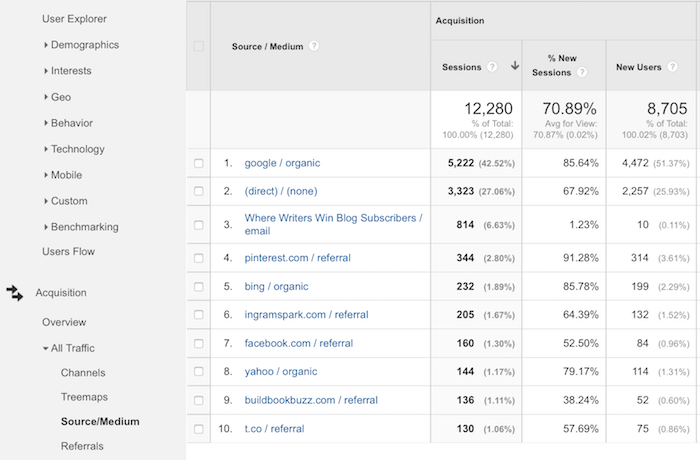 Our favorite Google Analytics insights to monitor, besides site visits, are how long readers spend engaging with content on your website, and where those visitors come from via the Acquisitions tab (see screenshot). Knowing where readers are arriving from, especially when it comes to social media, will help you determine where to put the bulk of your online efforts.
Our favorite Google Analytics insights to monitor, besides site visits, are how long readers spend engaging with content on your website, and where those visitors come from via the Acquisitions tab (see screenshot). Knowing where readers are arriving from, especially when it comes to social media, will help you determine where to put the bulk of your online efforts.
In the example shown of our own recent traffic sources, we know that Pinterest brought more folks to our website than Twitter and Facebook combined (always surprising), and that partners IngramSpark and BuildBookBuzz sent us the most referrals (and reminds us to send them each a note of thanks!)
2. Neatly.io:
This is the coolest dashboard we’ve ever seen (and we use it DAILY) to watch the needle move on your Google Analytics, your social integrations (i.e. Twitter and Facebook followers), Mailchimp, Paypal and more. 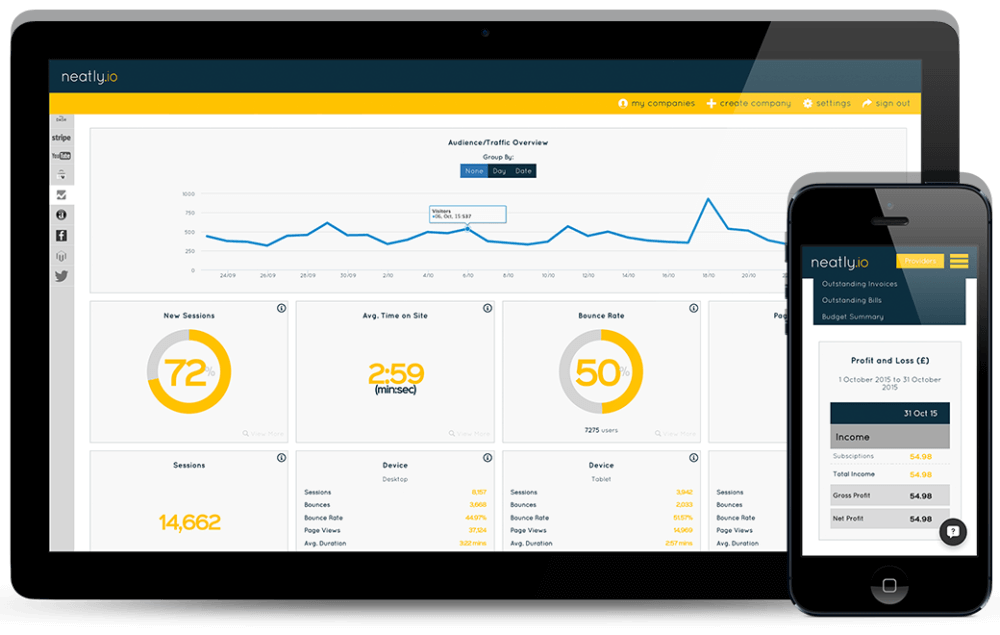
You can build numerous tiles you like into the dashboard to view a bunch of platforms at once, and get more intel on any of your linked accounts from a super easy icon menu on your dashboard. It’s not free, but for $7.50 – $12.50 a month against time saved and insights gained it’s a no-brainer.
3. QuillEngage Reports:
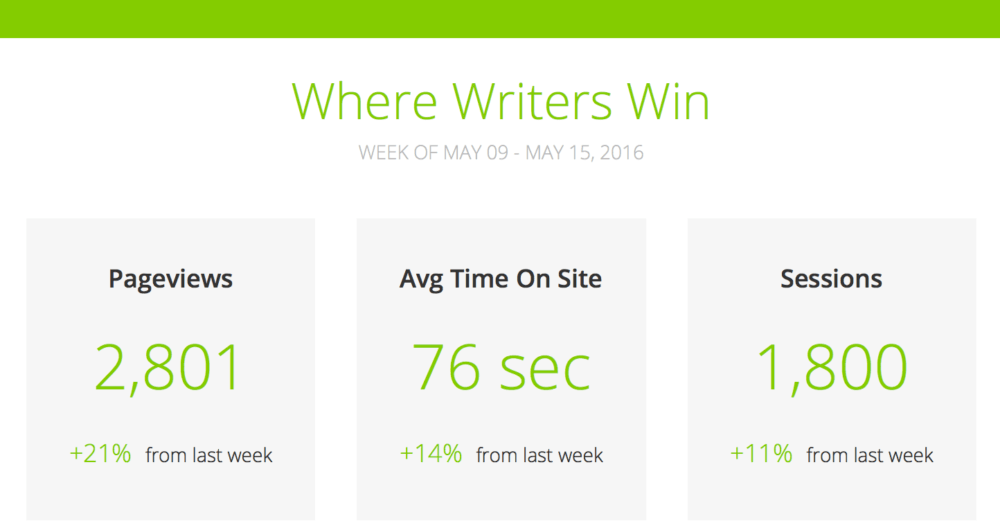
This free tool will email you weekly or monthly reports of your most important Google Analytics statistics with actionable advice. Easy and useful, and helps you make sense of all the gooey digits Google Analytics provide that can otherwise be overwhelming to those of us who’d rather deal in words than numbers.
4. Website Grader:
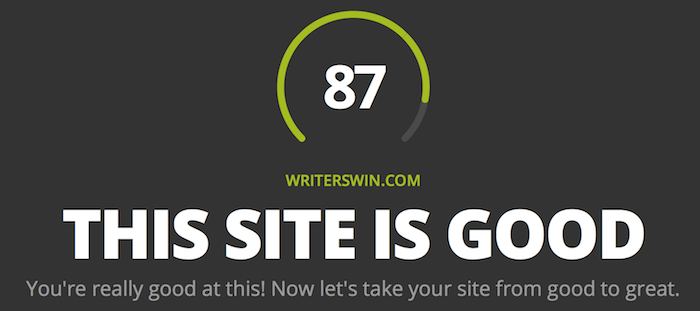
From Hubspot, grade your website and how well it’s reaching out, with insights and action items for performance, SEO, mobile-friendliness and security. Screenshot only shows very top portion; a bunch of individual insights and improvement instructions then show up below. Read more HERE.
5. Amazon Author Central:
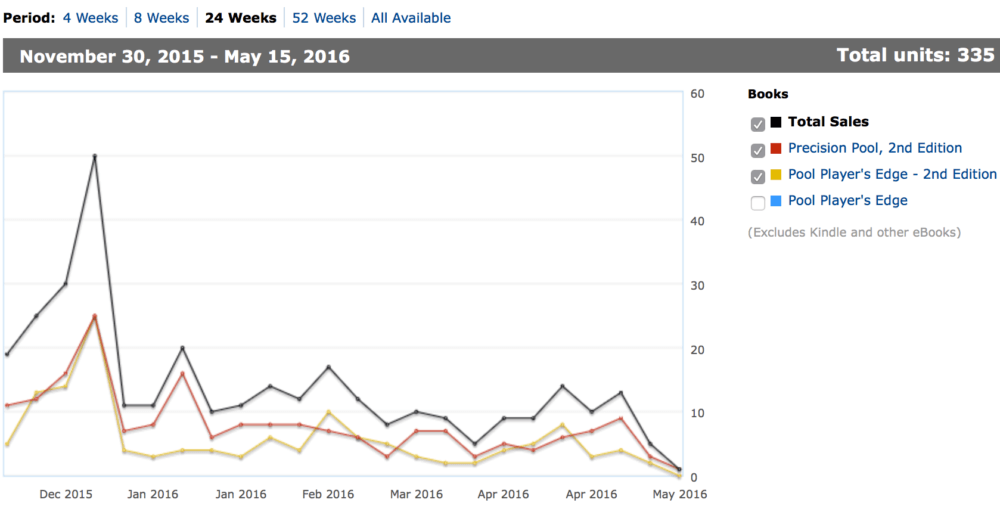 Besides your public author page, allowing you to embed your blog posts, video book trailer and Twitter feed, use this site to gain insights on your book sales with their Nielsen Book Scan feature. Above is a snapshot example of the last 24 weeks of sales for multiple titles. Note that I can see total sales and/or each book individually, to also know if/when a sales spike on one book improves sales of the other.
Besides your public author page, allowing you to embed your blog posts, video book trailer and Twitter feed, use this site to gain insights on your book sales with their Nielsen Book Scan feature. Above is a snapshot example of the last 24 weeks of sales for multiple titles. Note that I can see total sales and/or each book individually, to also know if/when a sales spike on one book improves sales of the other.
It’s not always perfect, and will only reflect print book sales (and doesn’t catch ’em all), but will give you indications of when your book is most saleable (i.e. holiday season) or if a recent promotion stacked up for you.
6. SEOSiteCheckup:
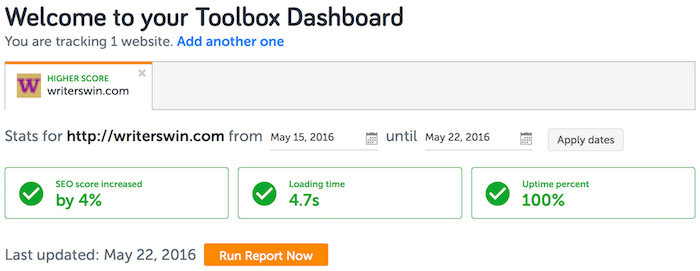
This is a wonderfully useful free tool to check how your site is doing in a number of SEO areas. Like Hubspot’s website grader it not only gives you a “grade” but tells you about any key issues and how to fix ’em. Bonus: The how-to fix recommendations are easy to understand and implement, making it fun to make minor changes and see your site quickly improve its grade!
7. Alexa.com:
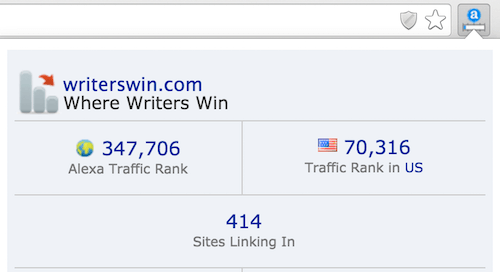 Installing the Alexa toolbar on your web browser of choice (Firefox, Chrome, or if you must, Internet Explorer) let you quickly see the traffic stats of any site you visit, to know which sites (the ones with the greater traffic rank lowest) will be more useful for you to connect with to gain a greater audience.You simply click on the “a” icon (as shown in screenshot at right) to see a global rank, US rank, sites linking in to that site and more.
Installing the Alexa toolbar on your web browser of choice (Firefox, Chrome, or if you must, Internet Explorer) let you quickly see the traffic stats of any site you visit, to know which sites (the ones with the greater traffic rank lowest) will be more useful for you to connect with to gain a greater audience.You simply click on the “a” icon (as shown in screenshot at right) to see a global rank, US rank, sites linking in to that site and more.
Their paid website research and analysis subscriptions let you further track the performance of sites you’re interested in (i.e. to see what sites are linking in to your competitors). Alexa culls numbers from those who have the toolbar installed on their browsers, so by all means install it on every browser you use!
Have another cool online measuring or monitoring tool to share with us? Include it in your comment below!
